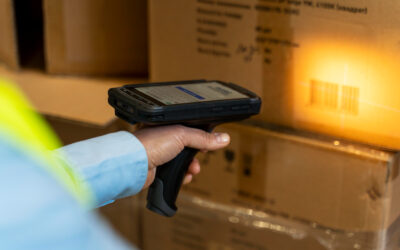Your business is losing money due to a lack of transparency over your assets. This is why you need to know how to track your assets. With effective tools in place, you’ll see a huge difference.
You may be using a spreadsheet at the moment, but you’ll find that this also creates gaps in transparency. You will also find that it adds a lot of time to update, manage, and view the system.
This is where asset tracking software comes in.

What Is Asset Tracking Software?
What this means is that you can edit asset information with the assets in front of you, and then this data will be added across the board for all of your colleagues to see.
With asset tracking software, not only is a fixed asset register created automatically, but you can also utilise helpful features to take your asset accountability further.
For example, you can use reminders and issues features to monitor your maintenance while also using the system as equipment check in check out software.
How To Track Your Assets
- Log your assets onto your system – this can be done via an import or while you’re auditing
- Add tags to your assets – this speeds up audits and creates robust location tracking
- Start using a range of helpful features, such as attachments, reminders, and customisable information fields
- Export and use your fixed asset register
When you’re tracking your assets, all of the data is collected in an exportable and customisable reporting page. This way, you can add filters to view essential information, such as when your assets are due for PAT tests or which are checked out.
Using QR Code Asset Tags
The way they work is by linking the unique information within the tag to the asset itself. In other words, once you’ve tagged an asset, you’ll be able to find that asset on your asset tracking app simply by scanning the tag.
Every time you scan an assets’ tag, too, the last seen location will update, the user who scanned the tag will be logged, and a timestamp of the scan will be created.
This creates a neat audit trail that you can use to pinpoint where assets were and who was interacting with them when any issues occurred or when any data was added.
How To Use itemit To Track Your Assets
The system is built on customer feedback from clients across the globe, so there’s guaranteed to be something for you, whether you’re in the construction industry, tracking IT assets, in healthcare, anything!
itemit’s asset management software has years of asset tracking expertise behind it, meaning that the system is scalable, suitable, and customisable to a wide range of use-cases.
To find out more about how to track your assets and equipment, you can contact our friendly team at team@itemit.com or fill in the form below to start a 14-day free trial of the software, no strings attached!
How To Track Your Assets
Choose a better way to track your assets
Start your free 14-day trial now
Instant access. No credit card details required.
Benefits of Vendor Managed Inventory for Your Business
[lwp_divi_breadcrumbs font_icon="5||divi||400" use_before_icon="on" before_icon="||divi||400"...
The Differences Between PUWER And LOLER
Understand the differences between PUWER and LOLER, and how each regulation affects equipment safety, compliance, and asset tracking in the workplace.
Inventory
[lwp_divi_breadcrumbs font_icon="5||divi||400" use_before_icon="on" before_icon="||divi||400"...




